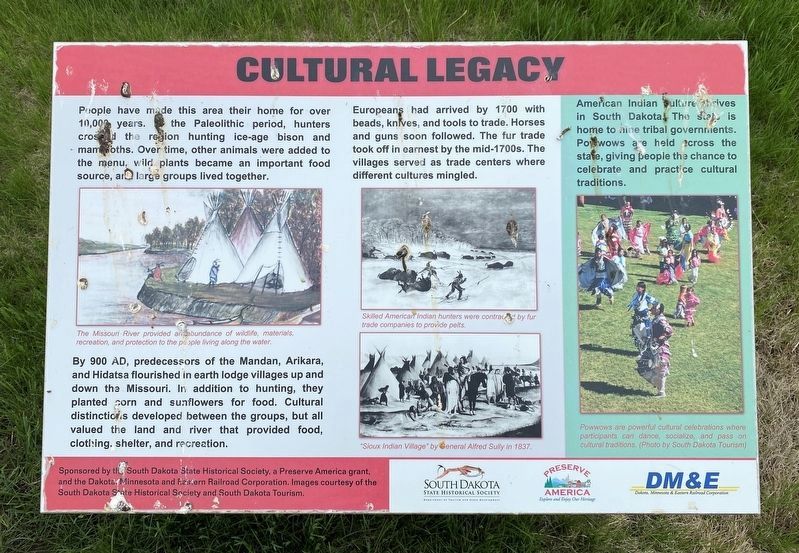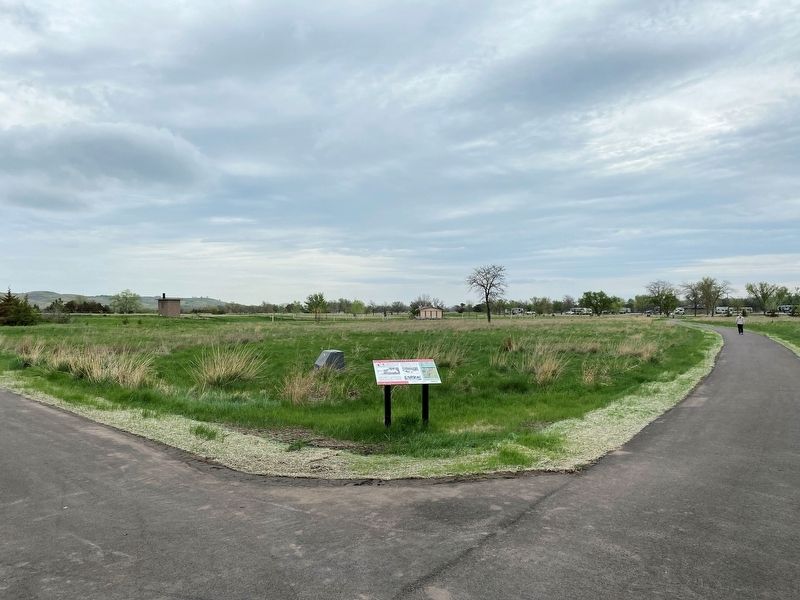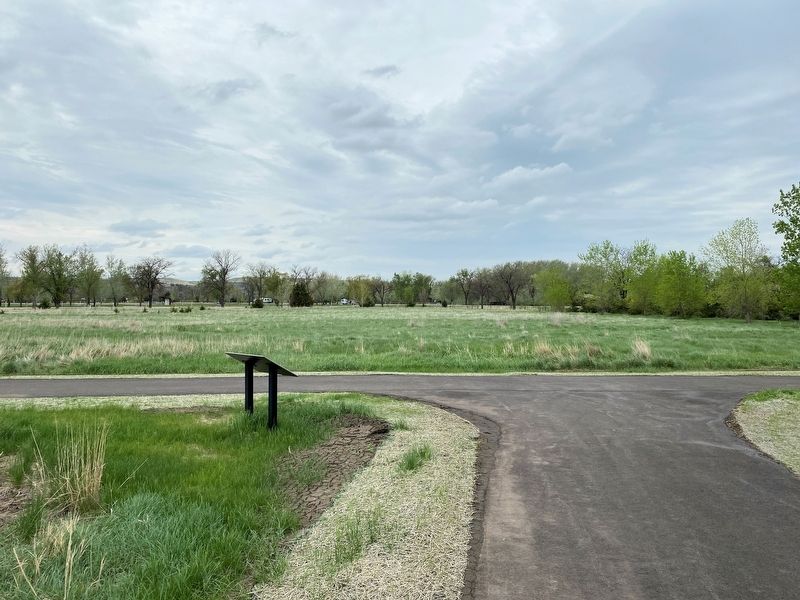Near Pierre in Hughes County, South Dakota — The American Midwest (Upper Plains)
Cultural Legacy
By 900 AD, predecessors of the Mandan, Arikara, and Hidatsa flourished in earth lodge villages up and down the Missouri. In addition to hunting, they planted corn and sunflowers for food. Cultural distinctions developed between the groups, but all valued the land and river that provided food, clothing, shelter, and recreation.
Europeans had arrived by 1700 with beads, knives, and tools to trade. Horses and guns soon followed. The fur trade took off in earnest by the mid-1700s. The villages served as trade centers where different cultures mingled.
The Missouri River provided an abundance of wildlife, materials, recreation, and protection to the people living along the water.
Skilled American Indian hunters were contracted by fur trade companies to provide pelts.
"Sioux Indian Village" by General Alfred Sully in 1837.
American Indian culture thrives in South Dakota. The state is home to nine tribal governments. Powwows are held across the state, giving people the chance to celebrate and practice cultural traditions.
Powwows are powerful cultural celebrations where participants can dance, socialize, and pass on cultural traditions. (Photo by South Dakota Tourism)
Erected by the South Dakota State Historical Society, a Preserve America grant, and the Dakota, Minnesota and Eastern Railroad Corporation. Images courtesy of the South Dakota State Historical Society and South Dakota Tourism.
Topics. This historical marker is listed in these topic lists: Native Americans • Settlements & Settlers. A significant historical year for this entry is 1700.
Location. 44° 20.635′ N, 100° 16.549′ W. Marker is near Pierre, South Dakota, in Hughes County. Marker can be reached from Farm Island Road. Located in Farm Island Recreation Area. Touch for map. Marker is at or near this postal address: 1301 Farm Island Rd, Pierre SD 57501, United States of America. Touch for directions.
Other nearby markers. At least 8 other markers are within walking distance of this marker. Missouri River Valley Archaeology (about 500 feet away, measured in a direct line); Site of Old Fort Sully (about 700 feet away); Entering Teton Country (approx. ¼ mile away); The First (Old) Fort Sully (approx. 0.4 miles away); Civilian Conservation Corps Camp (approx. 0.4 miles away); Farm Island Causeway (approx. half a mile away); Much Was Accomplished (approx. half a mile away); CCC Camp S - 207, Farm Island, 1933 - 37 (approx. 0.8 miles away). Touch for a list and map of all markers in Pierre.
Credits. This page was last revised on June 2, 2023. It was originally submitted on June 2, 2023. This page has been viewed 47 times since then and 7 times this year. Photos: 1, 2, 3. submitted on June 2, 2023.


